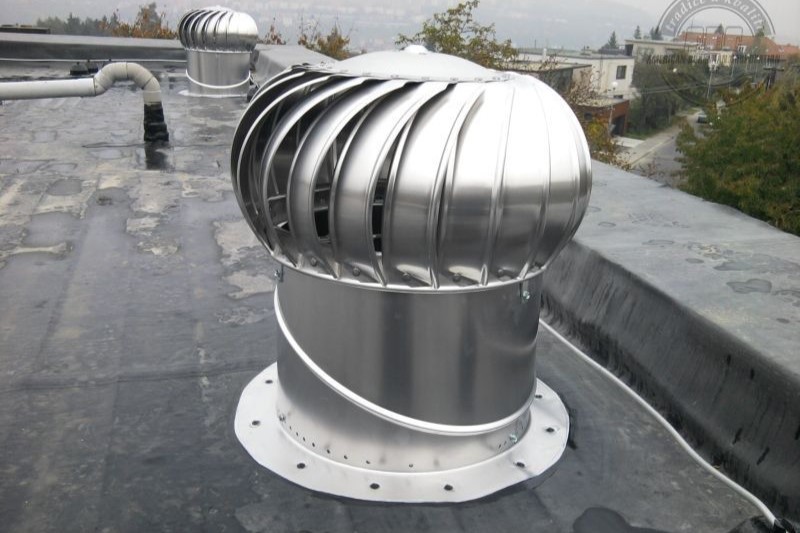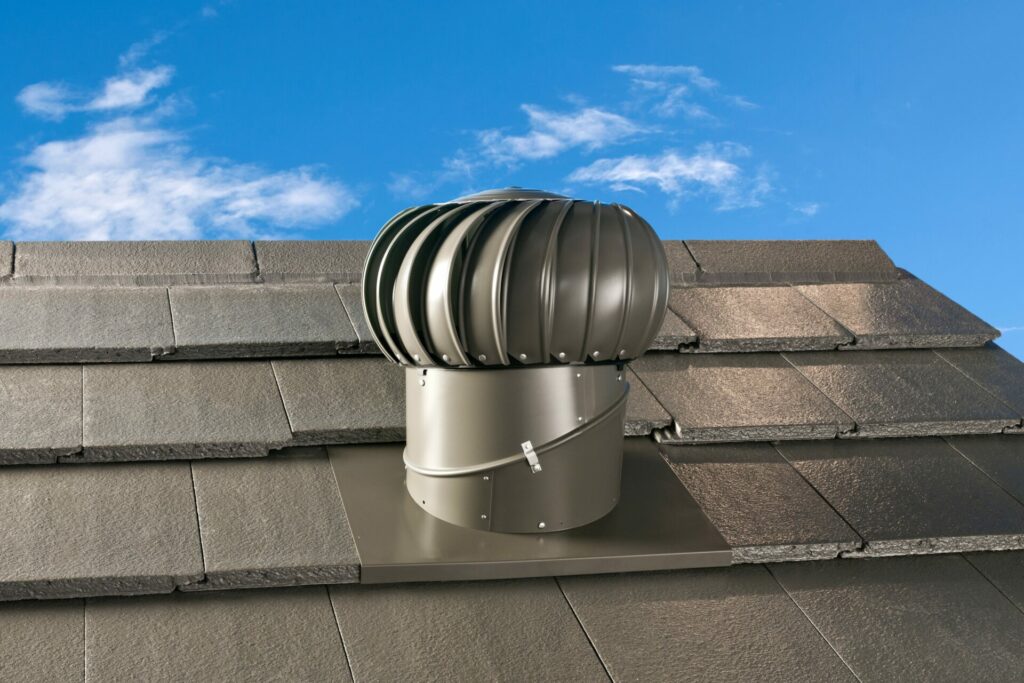
When you look out from the upstairs window of an Australian house, you might notice how many homes have a little spinning cylinder on the roof. Ever wondered what they are and what they do?
When it comes to maintaining a comfortable and energy efficient home, one often overlooked yet effective solution is the installation of whirlybirds. Let’s look at what whirlybird roof vents are, how they work and a couple of popular brands available in the Australian market.
What is a Whirlybird?
A whirlybird, also known as a roof vent or turbine vent, is a simple yet clever invention designed to improve ventilation in enclosed spaces. Whirlybirds are typically made of durable materials like stainless steel or aluminium and use the power of natural elements, like wind and solar energy, to create air circulation.
How Does a Whirlybird Work?
Whirlybirds operate on a straightforward principle: as the wind blows or sunlight strikes the connecting solar panel, it rotates, creating a suction effect. This suction draws out stale air and heat from the roof space and draws in a steady flow of fresh air. Paired with a professional insulation installation done in accordance with Australian insulation standards, the result is a cooler and more comfortable indoor environment.
Whirlybird Types and Features
Whirlybird roof vents come in various forms, designed to improve ventilation in buildings. There are two main types: active and passive whirlybirds.
Active whirlybirds operate mechanically (e.g., electricity), spinning continuously, whereas passive ones depend on the wind for movement. Since passive whirlybirds rely on natural elements, they are not as reliable.
When choosing a whirlybird, it’s also important to consider the size of the dome. A larger diameter will result in an increase in upward moving air, increasing the effectiveness.
Following are some popular types of passive and active whirlybirds:
Wind-Driven Whirlybirds
Standard roof ventilators are the traditional, wind-powered vents commonly seen on roofs. They use the wind’s force to rotate, effectively drawing out hot air and moisture from the building. They can be made of metal and plastic, both having their own pros and cons. Additionally, there are mini whirlybirds, which work well for ventilating compact spaces like bathrooms or laundry rooms.
Similar to standard roof ventilators are low-profile vents, which are designed with a lower, flatter profile. These vents are less noticeable on the roof while providing efficient ventilation.
Solar-Powered Whirlybirds
Equipped with integrated solar panels, solar whirlybirds generate energy to power a motor, ensuring ventilation without relying solely on wind. They are energy efficient and work well in sunny conditions. If you live in an area with little sun year-round, this may not the best option for you. Fortunately suburbs such as Campbelltown, Liverpool and Blacktown have got plenty of sunlight throughout the year, meaning that your solar-powered whirly bird will perform best when it’s needed the most – on hot sunny days.
Electric-Powered Whirlybirds
Electric-powered whirlybirds are powered by electricity and often feature a thermostat or humidity sensor to automatically regulate ventilation. They’re ideal for situations where consistent airflow is necessary.
Hybrid Whirlybirds
Hybrid whirlybirds combine both wind-driven and electric-powered features, ensuring functionality regardless of weather conditions. This hybrid design provides a more reliable ventilation solution.
Whirlybird Installation Cost
Installing a whirlybird is a cost-effective solution compared to other ventilation systems, but still comes at a price. The exact whirlybird installation cost will vary based on factors such as the type of whirlybird, roof complexity and installation service fees. Contact us if you would like a quote from Amelior Insulation to supply and install a whirlybird for you.
Whirlybird Replacement
Over time, whirlybirds may require replacement. The optimal time to replace a roof whirlybird is typically when it shows signs of wear and tear or is no longer functioning efficiently.
Common indicators include visible damage, reduced rotation or increased noise during operation. Additionally, if your energy bills are rising despite proper use and adequate ceiling insulation, it might be a signal that the ventilation system is not working effectively. When considering a replacement, consider investing in a newer or upgraded model for better performance.
Whirlybird Brands
There are many companies that sell whirlybird roof vents and other ventilation products. Two of the most well-known whirlybird brands include:
- Bradford Ventilation: Previously ‘Edmonds’, Bradford Ventilation is known for their durable and efficient roof ventilation products, along with their insulation range which includes Bradford Gold insulation. They offer a range of whirlybirds designed for different climates and roof types.
- Lomanco: Lomanco is a trusted brand with a history of providing effective attic ventilation solutions, including whirlybirds. Their products are often praised for their durability.
When choosing a whirlybird, consider factors such as the size of the space you need to ventilate and the prevailing climate in your area. Reading customer reviews and seeking advice from a whirlybird installer can also help you make an informed decision.


Do Whirlybirds Work? Are Whirlybirds Worth it?
Properly installed whirlybird roof vents work well and are considered a good investment. A whirlybird installation is a practical and efficient way to improve ventilation, reduce energy costs and create a more comfortable living or working environment. Whether opting for a standard wind roof whirlybird, solar whirlybird, electric whirlybird or a hybrid model, the benefits of good air circulation are undeniable.
We’d recommend scheduling a roof insulation inspection before deciding on a whirlybird installation. This way, an experienced roof inspector can assess your roof space and advise you both on the whirlybird installation and also on whether you may need to upgrade the insulation in your roof space to a higher insulation R-value.
Whirlybird Installers
Amelior Insulation offers whirlybird installations in Canberra, Blue Mountains, Sydney and surrounding suburbs like Penrith and Parramatta. Contact one of our whirlybird installers on 0450 858 568 to organise an installation.
We look forward to hearing from you and helping you with your whirlybird requirements!
